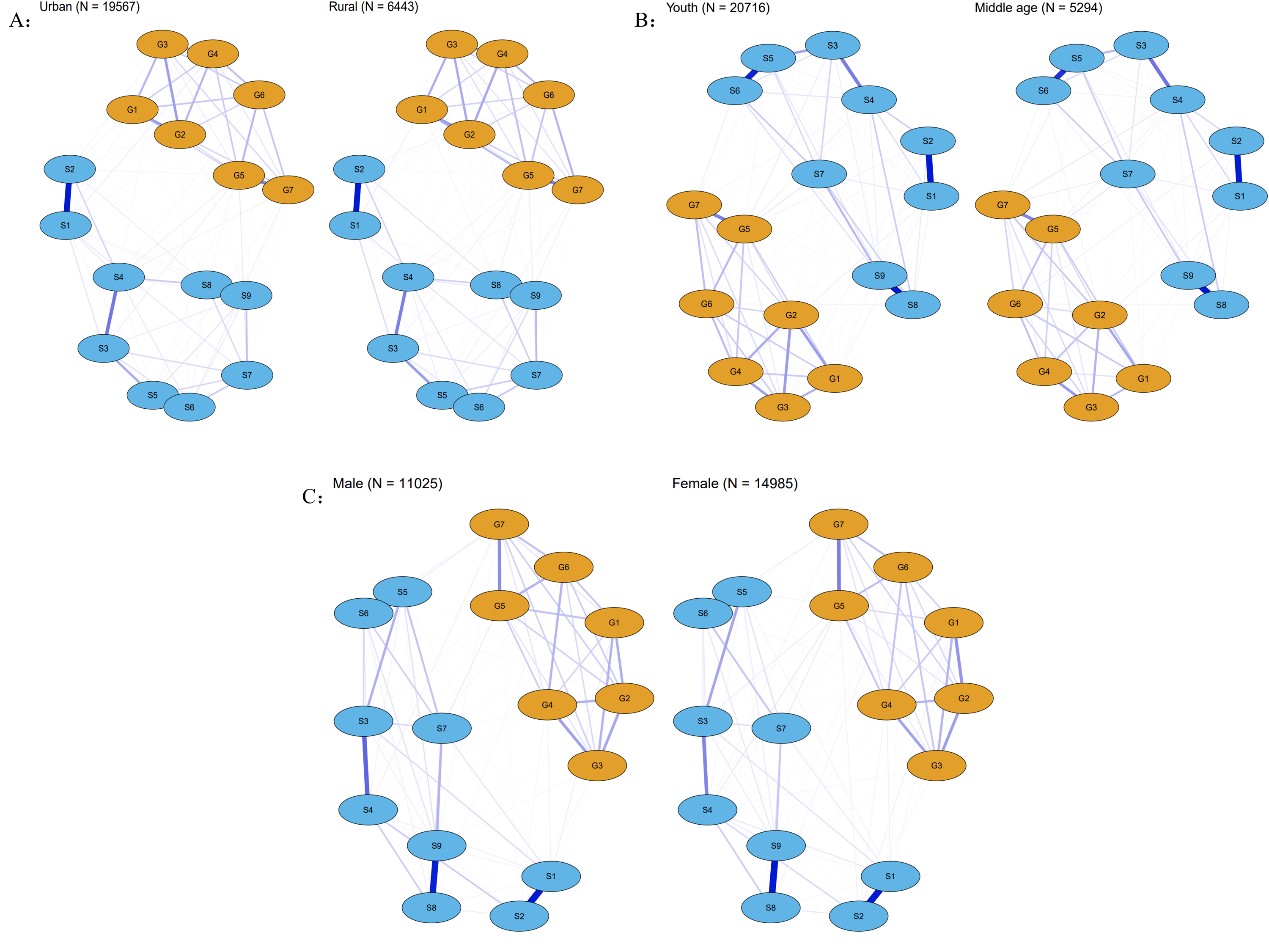近日,研究中心硕士生刘扬煜的一篇论文“Intrarelationships between suboptimal health status and anxiety symptoms: A network analysis”被Journal of Affective Disorders(JCR一区、影响因子6.6)录用。(论文链接地址:https://doi.org/10.1016/j.jad.2024.03.104)

论文摘要:背景:次优健康状态是一个全球学术界关注的公共卫生问题,是介于健康和疾病之间的一种中间健康状态。调查的目的是探讨焦虑状态和次优健康状态之间的关系,并确定中心症状和桥梁症状。方法:本研究从2022年中国的一项横断面研究中招募了26010名60岁以下的参与者。一般性焦虑障碍-7(GAD-7)和次优健康状况简表(SHSQ-9)分别用于量化焦虑和次优的健康症状水平。采用R程序的网络分析方法,对中心症状和桥梁症状进行判断。网络比较测试(NCT)用于调查人群中按性别、居住地和年龄划分的网络差异。结果:在本次调查中,焦虑症状、SHS和合并症的患病率分别为50.7%、54.8%和38.5%。“反应能力下降”、“呼吸急促”、“无法控制的担忧”是预期影响最大的节点。“烦躁”、“疲惫”是网络中预期桥接影响最高的两个症状节点,不同亚组网络的网络结构存在显著差异。局限性:无法研究变量之间的因果关系和动态变化。焦虑和亚健康是自我评定的,可能受到记忆偏差的限制。结论:针对中心症状和桥梁节点的干预措施有望改善中国居民的次优健康状况和焦虑。研究人员可以为不同人群建立症状网络,以捕捉症状关系。
Abstract: Background: Suboptimal health status is a global public health concern of worldwide academic interest, which is an intermediate health status between health and illness. The purpose of the survey is to investigate the relationship between anxiety statuses and suboptimal health status and to identify the central symptoms and bridge symptoms. Methods: This study recruited 26,010 participants aged <60 from a cross-sectional study in China in 2022. General Anxiety Disorder-7 (GAD-7) and suboptimal health status short form (SHSQ-9) were used to quantify the levels of anxiety and suboptimal health symptoms, respectively. The network analysis method by the R program was used to judge the central and bridge symptoms. The Network Comparison Test (NCT) was used to investigate the network differences by gender, place of residence, and age in the population. Results: In this survey, the prevalence of anxiety symptoms, SHS, and comorbidities was 50.7 %, 54.8 %, and 38.5 %, respectively. “Decreased responsiveness”, “Shortness of breath”, “Uncontrollable worry” were the nodes with the highest expected influence. “Irritable”, “Exhausted” were the two symptom nodes with the highest expected bridge influence in the network. There were significant differences in network structure among different subgroup networks. Limitations: Unable to study the causal relationship and dynamic changes among variables. Anxiety and subhealth were self-rated and may be limited by memory bias. Conclusions: Interventions targeting central symptoms and bridge nodes may be expected to improve suboptimal health status and anxiety in Chinese residents. Researchers can build symptom networks for different populations to capture symptom relationships.